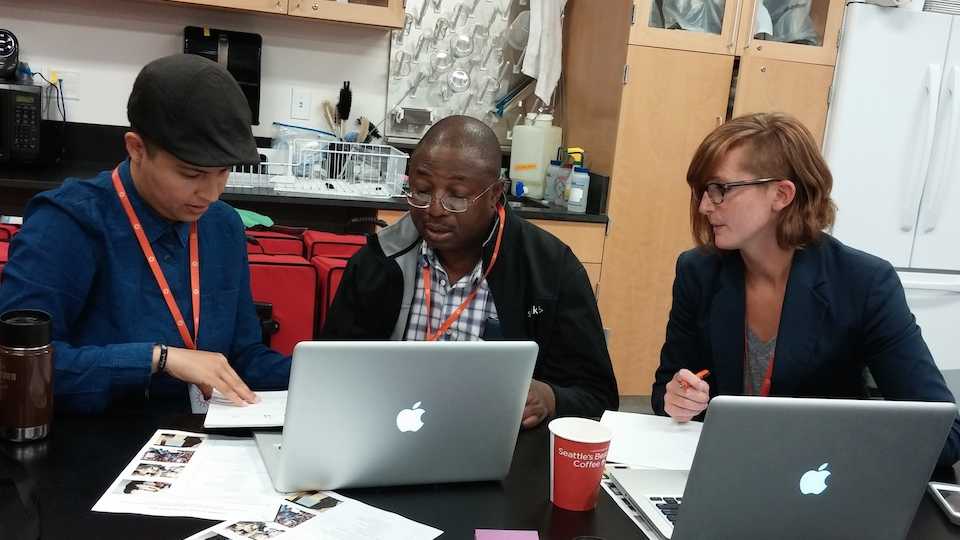Each year, a cohort of 30 teachers begin this two-year professional development program for 3rd–5th grade teachers.
In 2009, the Teacher Institute on Science and Sustainability was established, welcoming in its first cohort of approximately 30 educators, made up solely of San Francisco teachers. The following year, an enthusiastic teacher at Posey convinced her grade level colleague to apply with her to make the requisite teacher team; the two of them eventually became TISS’s first Oakland participants. Posey’s involvement was no fluke, though. The school’s principal at the time was dedicated to advancing science learning at Posey Elementary, as evidenced by the school’s annual field trips to Camp Royal in Livermore, a place where students could learn about sustainability. Fittingly, the original TISS coaching staff was also fully dedicated to preparing educators to teach about sustainable science. In their first year with TISS, the two Posey teachers spent their time learning about ways to build green buildings. At one of the workshops dedicated to this theme, Academy staff invited an architect who specialized in sustainable building to present to teachers.
Fueled by their newfound knowledge and supportive coaches, Posey’s initial cohort spent their first year in the program working to build lessons for their students based on the TISS workshops. They continued to teach FOSS curriculum just the same, but added green building projects to their science courses. The following year, the focus of the Teacher Institute’s professional development switched to sustainable eating, prompting these two Posey teachers to teach their students about the importance of eating locally. They took their students on field trips to farmers markets, began gardening in pots, ate what they grew, and produced brochures on how to eat sustainably. After graduating from TISS, the Posey teachers maintained their momentum, building planters in the schoolyard with the financial support of the school district, and encouraging other teachers to use this school garden as well. One TISS teacher’s students conducted studies on what was viable to grow in California’s climate, made charts to explain nutritional value of planted crops, measured light, developed watering and weeding schedules, and harvested food that year.
These two teachers were deeply impacted by these years of science professional development, by both the TISS program and the energy of the school surrounding science learning. They reported that the greatest shifts in their teaching occurred around:
- integrating sustainability content into their science curriculum,
- introducing science notebooks to facilitate more critical thinking and writing, and
- a shift from lecture-style teaching to more student autonomy and exploration.
Currently, one of these teachers is serving as a science coach for Oakland Unified School District. She reports using many lessons she learned from her TISS coach, especially the strategies of asking questions to induce reflection and providing her teachers with just as much positive as critical feedback. As of spring 2015, the second of those two teachers continues to teach at the same grade level and is currently helping prepare other teachers for the Next Generation Science Standards (NGSS). She commented, “If it wasn’t for TISS, I wouldn’t have had the confidence to apply” to serve on Oakland’s Science Instructional Reflection and Assessment team, on which she creates documents that offer advice on how to augment FOSS to support NGSS teaching.
